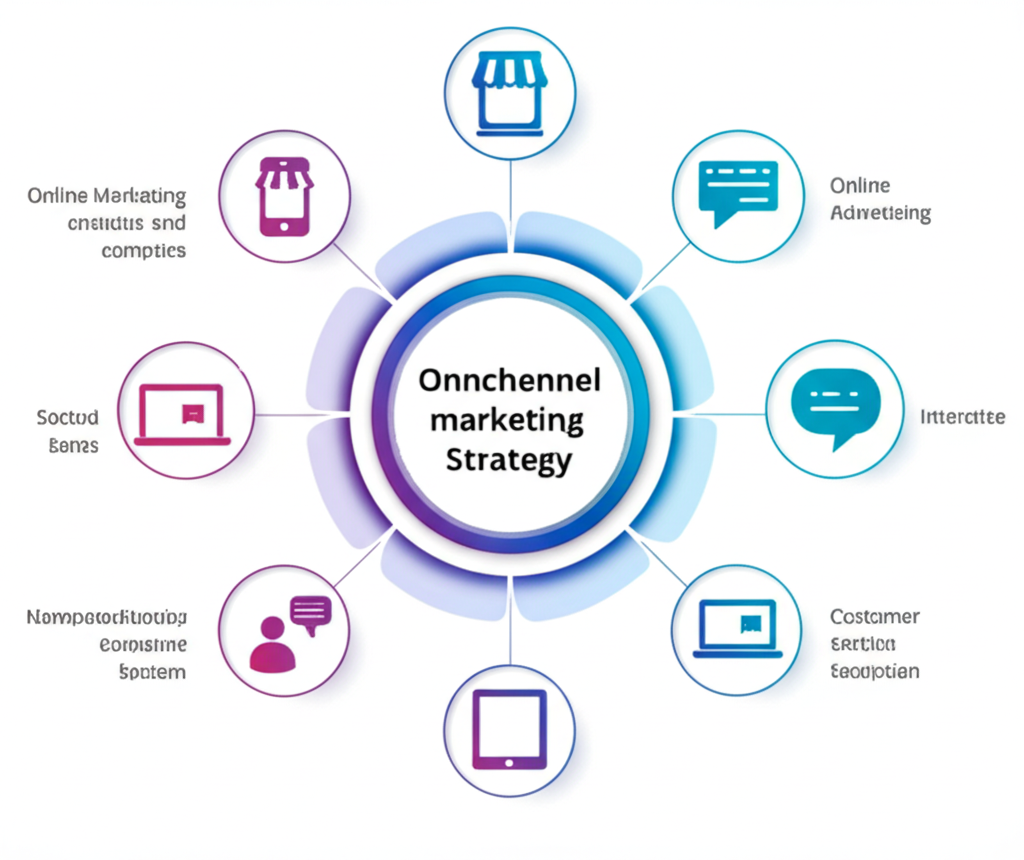Maximizing ROI with Omnichannel Media Buying

Introduction
In today's fragmented media landscape, consumers interact with brands across numerous touchpoints before making a purchase decision. From social media and display ads to connected TV and digital out-of-home, the customer journey has become increasingly complex. Omnichannel media buying addresses this complexity by creating cohesive campaigns that reach consumers across multiple channels, delivering a consistent message while optimizing for performance and efficiency.
Understanding Omnichannel Media Buying
Omnichannel media buying goes beyond traditional multichannel approaches by focusing on creating a seamless, integrated experience across all channels. Rather than treating each channel as a separate silo, omnichannel strategies recognize that consumers move fluidly between channels and devices, often engaging with multiple touchpoints simultaneously.
The key difference between multichannel and omnichannel lies in the level of integration and coordination. While multichannel marketing might use the same creative across different platforms, omnichannel marketing ensures that each channel works together to create a unified customer experience, with messaging and targeting that adapts based on where the customer is in their journey.
Building an Effective Omnichannel Strategy
A successful omnichannel media buying strategy begins with a deep understanding of your target audience and their journey. This requires comprehensive data collection and analysis to identify which channels your audience uses, how they move between them, and what messaging resonates at each stage of the journey.
Start by mapping the customer journey, identifying key touchpoints and moments of influence. This mapping should include both online and offline channels, recognizing that the line between digital and physical experiences continues to blur. Once you understand the journey, you can develop a cohesive strategy that delivers the right message through the right channel at the right time.
Channel Selection and Integration
Effective omnichannel media buying doesn't necessarily mean being present on every available channel. Instead, it requires strategic selection of channels based on your audience's preferences and behaviors. Focus on the channels that have the greatest impact on your target audience and ensure that these channels work together seamlessly.
Integration is key to omnichannel success. This means using consistent messaging and creative elements across channels while adapting the format and approach to suit each platform's unique characteristics. It also means ensuring that data flows freely between channels, allowing for real-time optimization and personalization.
Measurement and Attribution
One of the biggest challenges in omnichannel media buying is accurately measuring performance and attributing conversions across multiple touchpoints. Traditional last-click attribution models fail to capture the complex interplay between channels in an omnichannel environment.
Advanced attribution models, such as multi-touch attribution (MTA) and marketing mix modeling (MMM), provide a more comprehensive view of channel performance. These models help identify how different channels contribute to conversions, allowing for more informed budget allocation and optimization decisions.
Implementing a unified measurement framework that combines different attribution approaches can provide the most complete picture of campaign performance. This might include a combination of MTA for digital channels, MMM for broader market trends, and incrementality testing to validate the impact of specific channels or tactics.
Optimization Strategies for Maximum ROI
Once you have a solid measurement framework in place, you can begin optimizing your omnichannel campaigns to maximize ROI. This optimization should occur at multiple levels, from strategic budget allocation across channels to tactical adjustments within each channel.
At the strategic level, use attribution insights to allocate budget to the channels that drive the highest return. This doesn't always mean investing more in channels with the lowest cost per acquisition, as some higher-cost channels may play a crucial role in the customer journey even if they don't directly drive conversions.
At the tactical level, optimize creative, targeting, and bidding strategies within each channel based on performance data. Look for opportunities to create synergies between channels, such as retargeting users who have seen your TV ads with complementary digital messages.
Leveraging Technology for Omnichannel Success
Technology plays a crucial role in enabling effective omnichannel media buying. Demand-side platforms (DSPs) with cross-channel capabilities allow for centralized planning, buying, and optimization across multiple channels. Customer data platforms (CDPs) help unify customer data from different sources, creating a single view of the customer that can inform targeting and personalization efforts.
Artificial intelligence and machine learning are increasingly being applied to omnichannel media buying, helping to identify patterns and opportunities that might not be apparent to human analysts. These technologies can automate complex optimization tasks, such as bid adjustments and budget allocation, freeing up human resources to focus on strategy and creative development.
Case Study: Retail Brand Success
A leading retail brand implemented an omnichannel media buying strategy that integrated connected TV, social media, display advertising, and in-store promotions. By using a unified customer ID system, the brand was able to recognize the same customers across different channels and tailor messaging based on their previous interactions.
The campaign began with broad-reach connected TV ads to build awareness, followed by more targeted social and display ads that reinforced the TV message while adding more specific product information. As users showed interest in particular products, they received personalized offers that could be redeemed both online and in-store.
This integrated approach resulted in a 35% increase in ROAS compared to previous siloed campaigns, with particularly strong performance among customers who were exposed to messages across multiple channels. The brand also gained valuable insights into the customer journey, identifying key touchpoints and messaging approaches that drove the highest engagement and conversion rates.
Conclusion
Omnichannel media buying represents a powerful approach to maximizing marketing ROI in today's complex media environment. By creating cohesive campaigns that reach consumers across multiple touchpoints, brands can deliver more relevant, engaging experiences that drive better results.
Success in omnichannel media buying requires a strategic approach that combines deep audience understanding, thoughtful channel selection and integration, comprehensive measurement, and continuous optimization. With the right strategy and technology in place, brands can create truly integrated campaigns that meet consumers wherever they are, delivering messages that resonate and drive action.
As consumer behavior continues to evolve and new channels emerge, the principles of omnichannel media buying will remain relevant. By focusing on creating seamless, personalized experiences across all touchpoints, brands can build stronger relationships with their customers and achieve sustainable growth in an increasingly competitive landscape.


